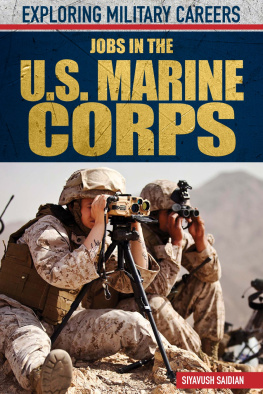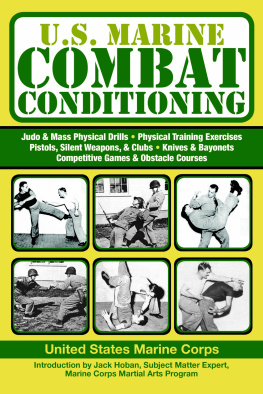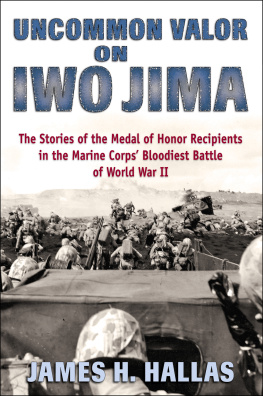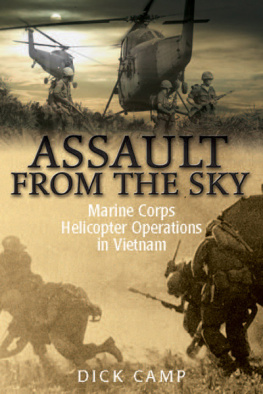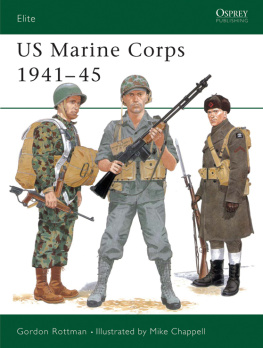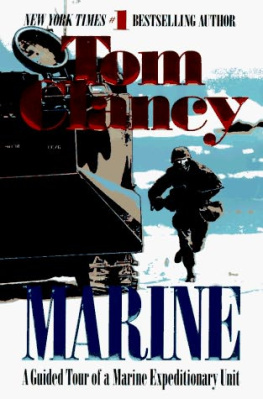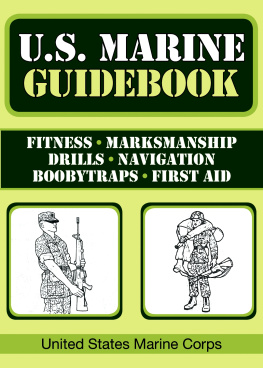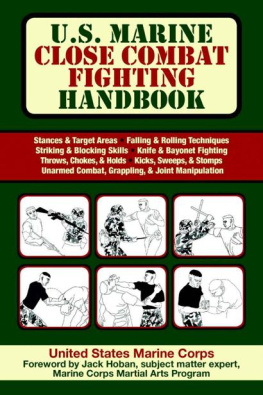First to Fight
First to Fight
AN INSIDE VIEW OF THE U.S. MARINE CORPS
Victor H. Krulak, Lieutenant General, USMC (Ret.)

BLUEJACKET BOOKS
NAVAL INSTITUTE PRESS
Annapolis, Maryland
This book has been brought to publication with the generous assistance of Edward S. and Joyce I. Miller.
1984 by the U.S. Naval Institute, Annapolis, Maryland
All rights reserved. No part of this book may be reproduced or utilized in any form or by any means, electronic or mechanical, including photocopying and recording, or by any information storage and retrieval system, without permission in writing from the publisher.
First Bluejacket Books printing, 1999
ISBN-13 978-1-61251-161-0
The Library of Congress has cataloged the hardcover edition as follows:
Krulak, Victor H.
First to fight.
Bibliography: p.
Includes index.
1. United States Marine CorpsHistory.
2. United StatesHistory, Naval I. Title.
VE23.K78 1984 359.960973 84-16690
12 13 14 20
To the steady legions of Marines who over the years, by their fidelity, resourcefulness, courage, and willingness to sacrifice on land, at sea, and in the air, created not just a distinguished Corps but a national institution.
Contents
by Clare Boothe Luce
Since the birth of our nation, the steady performance of the Marine Corps in fighting Americas battles has made it the very symbol of military excellence. The Corps has come to be recognized worldwide as an elite force of fighting men, renowned for their physical endurance, for their high level of obedience, and for the fierce pride they take, as individuals, in the capacity for self-discipline. The reasons for their high repute, however, go much deeper.
General V. H. Krulak, in First to Fight, seeks to bring those reasons to the surface. He describes the book as a series of simple vignettes, part history, part legend, and part opinion illuminating those qualities that have caused the Corps to survive and flourish. In fact the book is much more than that, providing an intimate cross-sectional view of how the Corps thinks and acts under stress, how its attention to the welfare of the individual and its high standards of performance have sustained it through good times and bad. And in telling his story the author shows an unusual ability to merge interesting detail with personal experience and opinion.
There is a stern reality in Krulaks portrayal of what military experience has always shown: easy traininghard combat, hard trainingeasy combat. He takes his reader into the inner workings of the rigorous recruit training system which has turned many a generation of soft young Americans into the legendary leathernecks, and he explains the passionate determination of the Corpss leaders to bring those in its ranks up to the best spiritual qualities of loyalty to Corps and Country and fraternal love for each other.
I learned something of this almost mystical spirit many years ago. My only brother enlisted in the Marine Corps at the age of eighteen when the United States entered World War I. His letters from boot-camp at Parris Island filled me with pity and alarm, so much did they sound like epistles from a slave labor camp or a military Gulag. But gradually I became aware that the note of self-pity and the plaintive I-me seemed to disappear from his letters, to be replaced by a more confident we-us. Ultimately the proud day came when he wrote that his group had completed their training and, We are shipping out for France. Strangely enough his letters from the war zone complained more about the cruel Simon Legree-like character of his battalions colonel than about the food, the privations, the fierceness of the Boche enemy he and his comrades were facing, or the wound he received at Belleau Wood. When the war was over, and my brother returned on leave to regale us with his war experiences, I asked him about that terrible colonel. Whereupon something very strange happened. Oh, he said in the flattest of flat voices, he was killed. And then, after a silent moment his young eyes grew moist. Sorry, Sis, he said, furtively wiping away a pair of tears, but we loved that SOB; he took such damn good care of us.
First to Fight underscores this factthat the qualities that make for military excellence consist not only of hard training, exceptional physical fitness, and stern discipline but of human solidarity. General Krulak makes clear that the U.S. Marine Corps is more than a crack military machine. It is a fraternity bonded in blood. The roots of that brotherhood are nourished by the Marines solitude among the armed forces. Readers who were not previously aware of Marine Corps history will learn of the efforts by the Army and the Navy to limit or alter the functions of the Corps by subsuming, assimilating, or absorbing it into one or the other, or both of their services. General Krulak gives a lucid and unresentful account of when and why these attempts were made in times past to diminish the identity of the Corps. We learn that General Marshall and General Eisenhower, two of the great organizers of our World War II victory, were among those who tried to rationalize the Marine Corps out of meaningful existence on military, economic, or institutional grounds. It is significant that again and again the Congress has come to the rescue of the threatened Corps, not as an act of pity or of emotion, but to preserve a precious American resource.
These and other episodes recounted in the book are reminders that the pursuit of excellence follows a hard and rocky road. The story of the Marines development of the tools and techniques involved in amphibious warfare in the face of apathy and parsimony is told in a quiet and richly detailed way. The reader is convinced of the enduring magnitude of this contribution to the art of war and of the vision and stubborn resolution of the men who did it.
It is in the matter of the Marines attitude on fighting, however, that the book is at its best. The story of the battle of Khe Sanh in Vietnam is an unforgettable portrait of dedicated professionals at war, an inspiring story of spirit and valor under brutal circumstances. It is told with flair and fire. Other stories of Marine Corps combat during the two centuries it has existed are tragic testimony to the fact that the United States is part of a society that is centuries away from the Utopian goal of One World of peaceable nations. In those two centuries our country has averaged involvement in major land or naval warfare during one year out of every six. Nor have we known any dearth of limited hostilities and undeclared wars. War Department records show that over the decades American servicemen have responded to about 100 calls to combatant duty somewhere in the world, and the Marines have been involved in most of them. Several of these minor combats were costlier, in loss of lives and money, than our larger wars, and the cost has often been a monument to our unpreparedness.
Americans seem to be amnesiac about the price of being unready for the brief-notice challenge of war. We persist in thinking of ourselves as a peaceable and peace-loving people and, during the years when our sons and brothers are not fighting and dying in war, our politicians enthusiastically foster this self-delusion with patriotic rhetoric. And all too often they keep their promises to pare down our military services. Despite the debilitating actions of peace-at-any-price civil leadership, the Marines have somehow been able to make and keep themselves ready to answer their countrys call. General Krulaks story of the 1950 Inchon landing in Korea is a moving example, telling how the Corps, with their brothers in the Navy, managed to produce from nowhere the men and means to make one of the most complex and decisive amphibious operations in history.


